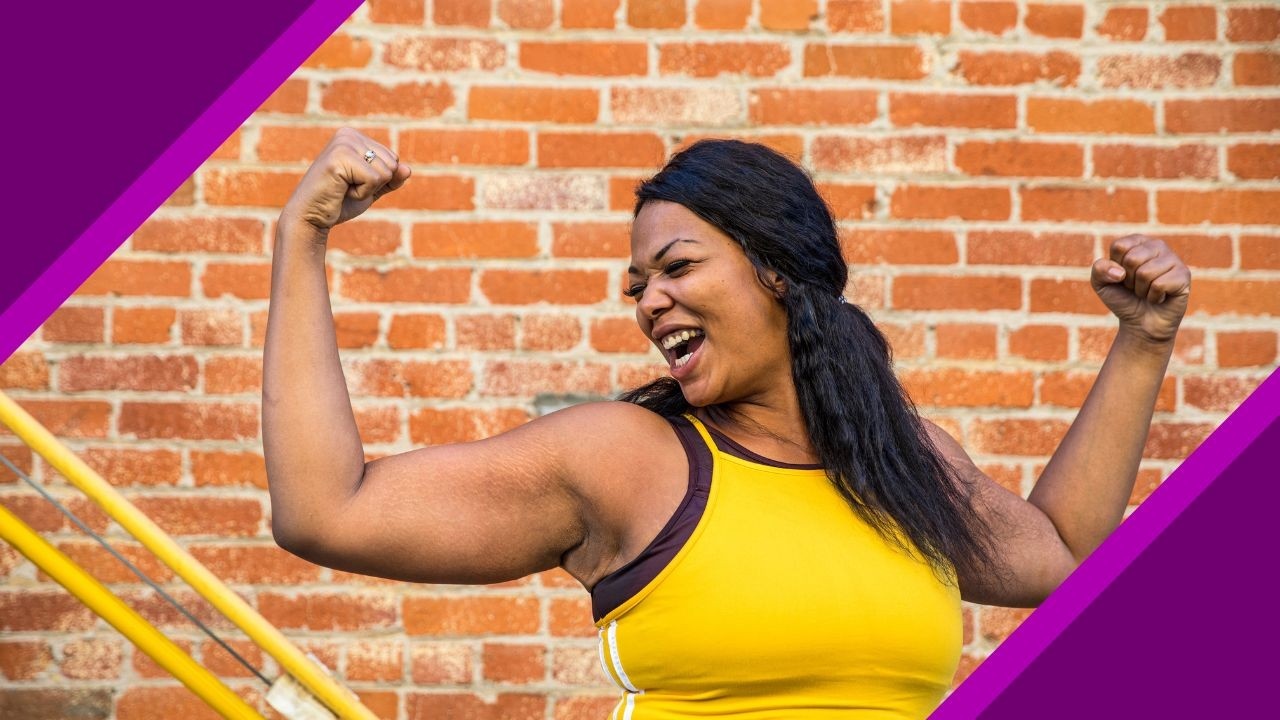
Why Menopausal Women Need All the Muscle They Can Make
Sep 26, 2022The menopause transition is a slippery slope for muscle loss. Here are some key reasons to lift weights to make and maintain as much muscle as you can.
By Selene Yeager
We talk an awful lot about lifting heavy sh*t here at Feisty Menopause. As active, performance-minded women we need strong muscles to run, ride, hike, swim, climb, row, nail those Olympic lifts, and keep chasing and crushing our goals.
But there’s more to muscle than sport. Muscle equals life, literally. Muscle mass is inversely associated with the risk of death. Adults with low muscle mass are more likely to die early than those with more muscle. That makes menopause a key time of life to improve your odds of both vitality and longevity.
Research shows the menopause transition is a “vulnerable period for the loss of muscle mass.” In a 2021 study, researchers found that compared to women in early perimenopause, those in late perimenopause had 10 percent less muscle mass in their arms and legs (as measured on the appendicular skeletal muscle index used in scientific studies). Late perimenopausal and postmenopausal women were also overwhelmingly more likely to have sarcopenia (involuntary muscle loss) than premenopausal or early perimenopausal women. Though it’s never too late to start lifting weights, if you’re perimenopausal and haven’t started yet, now is prime time.
Why Menopausal Women Need Muscle
Being strong, avoiding frailty, and potentially living longer are reasons enough, but there are even more health benefits of making and maintaining as much muscle as possible, including some you may not have considered:
A Healthier Heart
Muscle mass is good for your heart. A 2021 study published in the Journal of the American Heart Association found that women with high muscle mass levels are less likely to die from heart disease. In fact, medical professionals often emphasize building muscle over losing weight for women who want to lower their cardiovascular risk. Skeletal muscle protects your heart in a number of ways, including improving blood sugar management and metabolic health, as well as giving you the strength and energy to be more active and maintain high cardiovascular fitness levels. This is important because heart disease is by far the leading cause of death for women.

Fewer Hot Flashes
Data from the Study of Women’s Health Across the Nation (SWAN) found that lean body mass (aka muscle) is negatively associated with vasomotor symptoms (VMS) like hot flashes and night sweats and that maintaining higher levels of lean body mass during the menopause transition may protect against the development of these disruptive menopausal symptoms. Of course, there’s no promise that you can avoid hot flashes altogether by making muscle, but it’s good to know that muscle can help lower their frequency and impact, especially since up to 80 percent of us will experience hot flashes and night sweats during the menopause transition and beyond.
Stronger Bones
Muscle loss and bone loss often go hand in hand, especially during the menopause transition, when both tend to decrease more rapidly. Strength training to make and maintain your muscle can also help preserve your bone health. This is extremely important for women. Eighty percent of the 10 million Americans with osteoporosis are women and one in two women over 50 will break a bone because of dangerously low bone mineral density.
Lower Risk for Urinary Incontinence
The associations are clear (and special shout out to Hit Play Not Pause guest urologist, Dr. Kelly Casperson, for elevating this research), low muscle mass and strength are associated with higher rates of urinary incontinence in women, particularly those of menopausal age. One 2021 study found that nocturia (waking up more frequently during the night to pee), urinary urgency, incontinence, and overactive bladder were more common in women with decreased grip strength than in women with normal grip strength. Another paper presented this month reported that women with the highest amount of thigh muscle had a 54 percent lower incidence of urinary incontinence than those with the lowest amount of thigh muscle. These connections make sense when you consider that if you’re losing muscle and strength in your appendages, you’re likely losing it in your pelvic floor muscles that support your lower urinary tract.
Better Metabolic Health & Body Composition
Research shows that older women with low muscle mass have a higher risk of impaired fasting glucose (i.e., high blood sugar) and type 2 diabetes regardless of BMI, waist circumference, or fat mass. Muscle mass helps clear blood sugar and reduce the amount of insulin needed to maintain healthy blood sugar levels, which in turn helps maintain insulin sensitivity, which is important during the menopause transition and beyond when we can become more insulin resistant. Since insulin resistance has been linked to weight gain excess during menopause, it can also help with body composition.
A longer, healthier life with fewer menopausal-related health risks? What’s not to love? Aim to strength train at least twice a week and remember to eat plenty of protein at every meal and snack (especially around training) to give your body the fuel it needs to make and maintain that vital muscle mass.
Get Feisty 40+ in Your Inbox
We hate SPAM. We will never sell your information, for any reason or send you emails that suck!


